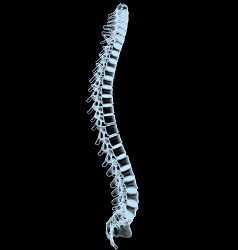
Chronic back pain is a common complaint among adults. It can get worse with time and hamper your productivity. If the problem persists for a while, even after undergoing corrective treatments, your doctor may suggest laminectomy surgery to alleviate this pain. This procedure involves the removal of the bony arch i.e. the lamina, of the vertebra.
A Laminectomy is performed by an Orthopedic Surgeon or a Neurosurgeon.
Pre-Operative Procedures
Before undergoing the procedure, your doctor will assess your body as a whole and determine if you are in good general health. If you have no underlying health conditions, you will be permitted to undergo the surgery. In the weeks before the scheduled date, you will need to properly prepare yourself for the treatment.
You will have to meet the anesthesiologist a couple days before the surgery to discuss whether you will require general anesthesia/spinal anesthesia. MRIs, X-rays and related imaging tests will be performed.
If you drink or smoke, you will be required to quit for a few weeks leading up to the procedure. Your doctor will also advise you to stop taking certain medications if they have a chance of causing complications.
The Laminectomy Procedure
To begin the surgery, your doctor will make an incision on your back to gain access to the affected area. Once inside, the muscles and soft tissue will be pulled to the side to expose the spine.
Decompression will be carried out, cutting bone, bone spurs, and ligaments that are compressing the nerves. The surgeon may then go on to remove a small part or a large portion of spinal bones, depending on the requirements of your specific surgery.
A spinal fusion may be carried out for some people to stabilize the spine. Others may choose to get an implant that will help stabilize bones in the lower back but not restrict motion like a fusion would. Some may want to have a disc or additional bone removed to widen the passage where the nerves exit the spinal canal.
What to Expect After the Operation
Once the procedure is completed, you will be shifted to an observational area where you will be monitored for your vital signs after the surgery. Depending on the extent of the surgery and your doctor’s recommendation, you may be able to return home the same day the surgery is completed.
You may experience some discomfort after the operation, but this is temporary and should subside soon. If it lasts for too long, pain medication will be prescribed to help ease the lingering discomfort.
While you are recovering, you may need to have assistance getting out of the bed and walking around for some time.
Recovering From a Laminectomy
Depending on the extent of your surgery, you may be required to take period of a few days to a few weeks to properly recover. During this time, you should limit yourself to minor desk work and avoid strenuous activities. You may need to avoid lifting heavy objects and participating in sport activities for about a month.
During this time, the incision site will have to be kept clean and dry to avoid the chances of an infection.
It is advisable to walk around every hour or so if you have a job where you st for a long period of time. Recovery time depends on the extent of surgery. While a minor Laminectomy will take a maximum of few weeks to heal, a Spinal Fusion surgery can lengthen your recovery time by about four months. You will begin to experience the effects of your surgery the sixth week onward and may witness a significant reduction in your back pain.
Contact Our Office
Contact Advanced Spine & Orthopedics to schedule a consultation with a board-certified orthopedic surgeon, Dr. Kevin James. With his help, your days of having consistent back pain ar numbered.

